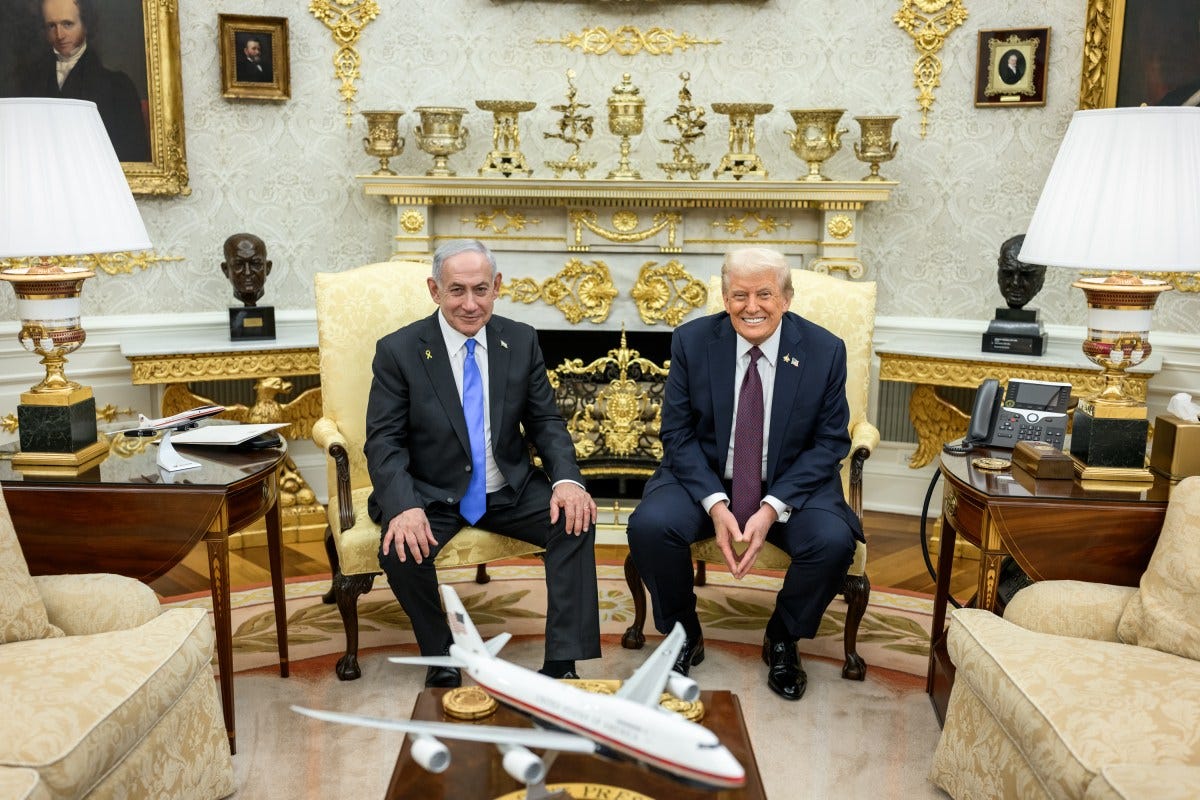Trump's Gaza Peace Deal: What's Inside the Israel-Hamas Agreement
A breakdown of the ceasefire, the hostage-prisoner swap, and the powerful countries calling the shots.
The Deal in Brief
After months of carnage and chaos, the guns have fallen silent — at least for now. The agreement between Israel and Hamas trades hostages for prisoners, bombs for promises, and headlines for hope. Around twenty Israeli hostages have come home, roughly two thousand Palestinian prisoners walked free, and a thin outline for Gaza’s future governance was scribbled into the margins.
Phase one is a verified ceasefire and troop pullback: Israeli forces retreat from northern and central Gaza to “security lines” that international monitors will later define. Phase two, if it holds, requires a gradual demobilisation of Hamas units under Egyptian oversight and a full withdrawal of Israeli troops within ninety days — a deadline already generating scepticism in Jerusalem. Phase three, the so-called “long peace,” would establish Gaza as a demilitarised enclave with U.N. or Arab League peacekeepers at the borders.
It’s technically a temporary ceasefire that can become permanent only if everyone pretends to trust each other long enough. Which, historically, has never gone well.
What It Means on the Ground
For Palestinians, the ceasefire is oxygen. Aid trucks roll again, families crawl out from rubble, and detainees hug their children. Yet the future is foggy: who governs Gaza now? A technocratic caretaker council? A foreign-designed proxy administration? Hope and humiliation are still roommates.
The draft proposal names a “Gaza Reconstruction Council” — a hybrid of local civil leaders, Palestinian Authority technocrats, and representatives from Egypt, Jordan, and the UAE. Hamas officials are pointedly excluded, at least on paper. But in Gaza, “excluded” often just means “rebranded.” The council would answer to a joint U.S.–Arab oversight board, which in turn would control aid distribution.
Reconstruction, worth an estimated $25–30 billion, is to be bankrolled by the Gulf states and the EU, funnelled through an international trust fund. The money flows only if Israeli inspections verify materials aren’t being used for weapons. So yes — there’s a mechanism to prevent it from being siphoned off, but it also gives Israel a veto over every sack of cement. The Swiss accounts joke still stands.
For Israelis, the hostages’ return is a gut-level triumph and temporary balm. But it forces a reckoning inside Netanyahu’s shaky coalition: how much security is worth surrendering for quiet? The old wounds remain, and they bleed in prime time.
The Reception
Across Israel, jubilation. Across Gaza, disbelief. In Washington, victory laps. The global press has been split between “historic breakthrough” and “temporary pause before the next inferno.” Analysts praise the lives saved while side-eyeing the fine print. It’s peace-theatre until the hard parts stick: demilitarisation, reconstruction, political legitimacy.
Will There Be Peace?
Not yet. This is a band-aid on an amputation. True peace needs four missing ingredients: a credible Palestinian authority, an Israeli government that survives its own extremists, reconstruction money that doesn’t vanish into Swiss accounts, and an actual political horizon. For now, there’s only quiet — which, admittedly, sounds heavenly compared to artillery.
Flashback: 2016–2020 — When “Peace” Meant Press Photos
Trump’s first term brought us the Abraham Accords, which normalised relations between Israel and several Arab states but largely ignored the Palestinians. Jared Kushner sold it as a “deal of the century,” heavy on champagne, light on substance. There were handshakes, flights to Dubai, and zero progress on the occupation.
Skipping the Palestinians didn’t solve the problem; it froze it. And frozen conflicts have a nasty habit of thawing into firestorms. That’s how you get October 7th — an eruption from the vacuum diplomacy left behind.
The Power Game
This new deal reeks less of altruism than of leverage. Trump’s team reportedly tied U.S. funding to Israeli compliance. In plain terms: if Netanyahu baulks, the White House threatens to suspend part of the $3.8 billion annual military aid package, along with new arms shipments and IMF support guarantees.
Inside Israel, the fallout was instant. Finance Minister Smotrich accused Washington of “blackmail,” and Ben Gvir threatened to leave the coalition. Netanyahu — ever the survivor — is already framing the deal as his own triumph, not a capitulation. He got neither full credit nor full control, but he bought a few more news cycles.
The regional pressure campaign didn’t stop there. Egypt was offered debt relief and expanded U.S. wheat subsidies for opening Rafah to humanitarian convoys and policing smuggling tunnels. Qatar, eager to stay relevant after the World Cup glow faded, reportedly secured a pending F-35 maintenance contract and renewed U.S. security assurances in exchange for keeping its back-channel with Hamas open. Everyone got something; everyone owes someone.
Hamas’s Fate
Officially, Hamas as a military organisation is being “phased out.” In reality, the political wing remains in Doha, the fighters blend into civilian life, and the ideology stays intact. The deal avoids the word “disarmament,” preferring “reintegration.” That’s diplomatic code for we’ll see. The militants aren’t gone; they’ve just gone quiet long enough for cameras to pan elsewhere.
The Bottom Line
This ceasefire deserves cautious celebration. Families are reunited, and for the first time in years, silence isn’t the sound of fear. Yet the fundamentals haven’t shifted: Gaza’s governance remains undefined, Israel’s politics remain combustible, and the White House’s attention span remains tied to cable ratings.
Expect a season of fragile calm, a flood of donor money, and endless claims that Trump “brought peace to the Middle East.” What we can’t expect is transformation. Until both sides find a way to share more than airspace, peace will stay what it’s always been here — a word on a podium, waiting for meaning.



